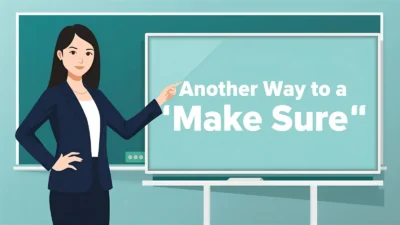The word “shows” is one of the most common verbs in English, often used to mean demonstrates, presents, indicates, or reveals. While simple and clear, it can feel repetitive in essays, reports, presentations, or even creative writing. To improve your communication, you can replace “shows” with a variety of alternatives that better match your context—whether formal, casual, academic, or descriptive.
In this article, you’ll find 30 alternatives to “shows” with their meanings, detailed explanations, examples, best uses, and tones.
1. Demonstrates
Meaning: Proves or makes something clear.
Explanation: Common in academic and professional writing.
Example: “The data demonstrates a clear upward trend.”
Best Use: Reports, research, academic writing.
Tone: Formal, precise.
2. Illustrates
Meaning: Explains with examples or visuals.
Explanation: Often used in teaching or descriptive writing.
Example: “This story illustrates the importance of teamwork.”
Best Use: Educational, explanatory contexts.
Tone: Clear, instructive.
3. Indicates
Meaning: Points out or signals something.
Explanation: Neutral and professional.
Example: “The survey indicates a shift in customer preferences.”
Best Use: Business and research.
Tone: Formal, factual.
4. Reveals
Meaning: Makes something hidden known.
Explanation: Adds an element of discovery.
Example: “The report reveals gaps in the current system.”
Best Use: Analytical or investigative writing.
Tone: Neutral, slightly dramatic.
5. Displays
Meaning: Presents or puts on view.
Explanation: Often used for visuals, behavior, or data.
Example: “The graph displays quarterly revenue growth.”
Best Use: Presentations, reports.
Tone: Neutral, professional.
6. Presents
Meaning: Brings forward for consideration.
Explanation: Polished and professional.
Example: “This chart presents the results of our study.”
Best Use: Formal reports, presentations.
Tone: Professional, clear.
7. Depicts
Meaning: Represents visually or in detail.
Explanation: Common in art, literature, or descriptions.
Example: “The painting depicts a peaceful village scene.”
Best Use: Creative, descriptive writing.
Tone: Artistic, vivid.
8. Conveys
Meaning: Communicates an idea or feeling.
Explanation: Highlights emotional or abstract messages.
Example: “Her expression conveys disappointment.”
Best Use: Literature, personal communication.
Tone: Thoughtful, expressive.
9. Portrays
Meaning: Represents something vividly.
Explanation: Often used for media, art, or narratives.
Example: “The film portrays life during the Great Depression.”
Best Use: Storytelling, reviews.
Tone: Descriptive, artistic.
10. Highlights
Meaning: Draws special attention to something.
Explanation: Used to emphasize key points.
Example: “The study highlights the need for further research.”
Best Use: Reports, presentations, essays.
Tone: Professional, emphatic.
11. Expresses
Meaning: Communicates thoughts or feelings.
Explanation: Works well for emotions and ideas.
Example: “The poem expresses deep sorrow.”
Best Use: Creative and personal writing.
Tone: Emotional, reflective.
12. Signifies
Meaning: Represents or symbolizes.
Explanation: Strong alternative with symbolic nuance.
Example: “This gesture signifies respect.”
Best Use: Formal or symbolic contexts.
Tone: Formal, interpretive.
13. Deposes
Meaning: Declares formally, often in legal contexts.
Explanation: Specialized use, less common in casual writing.
Example: “The witness deposes that he saw the suspect.”
Best Use: Legal, formal contexts.
Tone: Technical, authoritative.
14. Emphasizes
Meaning: Stresses importance.
Explanation: Stronger than “shows” in pointing out significance.
Example: “The report emphasizes the risks of inaction.”
Best Use: Academic, persuasive writing.
Tone: Strong, assertive.
15. Exhibits
Meaning: Clearly displays or presents.
Explanation: Often used for behavior, qualities, or data.
Example: “The child exhibits remarkable talent in music.”
Best Use: Academic, scientific, descriptive.
Tone: Formal, neutral.
16. Outlines
Meaning: Provides a structured overview.
Explanation: Great for summaries or step-by-step explanations.
Example: “The guide outlines the steps for registration.”
Best Use: Manuals, reports.
Tone: Professional, instructional.
17. Suggests
Meaning: Implies without directly stating.
Explanation: Useful when evidence isn’t absolute.
Example: “The findings suggest a link between diet and sleep quality.”
Best Use: Research, cautious conclusions.
Tone: Neutral, tentative.
18. Confirms
Meaning: Verifies accuracy or truth.
Explanation: Stronger than “shows” because it validates.
Example: “The test confirms the initial diagnosis.”
Best Use: Academic, professional reports.
Tone: Strong, factual.
19. Reflects
Meaning: Represents or mirrors something.
Explanation: Great for abstract ideas.
Example: “His actions reflect his values.”
Best Use: Essays, reflective writing.
Tone: Thoughtful, formal.
20. Demonstrates Evidence Of
Meaning: Provides proof or signs.
Explanation: Adds emphasis in factual contexts.
Example: “The symptoms demonstrate evidence of improvement.”
Best Use: Research, reports.
Tone: Formal, precise.
21. Manifests
Meaning: Clearly brings something into existence.
Explanation: Slightly dramatic and formal.
Example: “The disease manifests as a persistent cough.”
Best Use: Academic, medical, or formal contexts.
Tone: Formal, serious.
22. Validates
Meaning: Confirms legitimacy.
Explanation: Stronger than “shows” because it proves.
Example: “The new evidence validates the earlier findings.”
Best Use: Research, professional reports.
Tone: Formal, definitive.
23. Proves
Meaning: Establishes truth with certainty.
Explanation: Strong and decisive alternative.
Example: “The experiment proves the theory correct.”
Best Use: Academic and scientific contexts.
Tone: Strong, assertive.
24. Depicts Clearly
Meaning: Strong descriptive variation of “depicts.”
Explanation: Used when you want to stress clarity.
Example: “The graph depicts clearly the rise in inflation.”
Best Use: Reports, visuals.
Tone: Clear, professional.
25. Underlines
Meaning: Stresses importance.
Explanation: Often used figuratively.
Example: “This underlines the need for better communication.”
Best Use: Essays, reports, persuasive writing.
Tone: Emphatic, formal.
Conclusion
The word “shows” is useful but can be vague and overused. Depending on your context, you can replace it with “demonstrates” or “indicates” for formal writing, “illustrates” or “depicts” for descriptive contexts, and “reveals” or “highlights” when you want to stress discovery or importance. Choosing the right alternative not only diversifies your writing but also sharpens your message, making your communication more professional, creative, or impactful.



